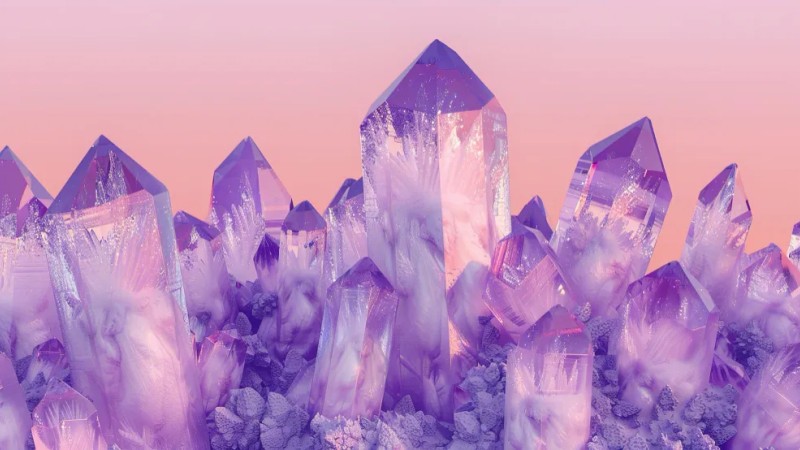Crystals: Ancient Guardians of Life

“In a crystal, we have clear evidence of the existence of a formative life principle, and though we cannot understand the life of a crystal, it is nonetheless a living being.”
— Nikola Tesla
Crystals have long fascinated scientists, philosophers, and enthusiasts alike. Their intricate geometries and mesmerizing forms are not just geological wonders but may hold clues to the very origins of life itself. What if these ancient formations aren’t just inert structures but resemble life in ways we are only beginning to understand?
Crystals and Life-like Behavior
Crystals exhibit growth in a manner strikingly similar to living organisms. They begin as tiny seeds and slowly accumulate atoms in precise, repeating patterns. This process mirrors how living beings grow by replicating cells. Just as organisms follow genetic blueprints encoded in their DNA, crystals adhere to an internal structure that determines their shape and form. This ability to self-organize is one of the fundamental traits of life.
Imagine a time-lapse of a crystal growing from a tiny seed, visually compared to a plant sprouting. The similarities in their growth patterns highlight a shared adherence to an internal blueprint, suggesting that crystals may operate on principles akin to biological systems.
The Fractal Nature of Crystals
At a fundamental level, both crystals and life exhibit fractal structures — repeating patterns that appear at every scale. A tree’s branches mirror its roots, and similarly, a crystal’s structure repeats from the smallest molecule to its overall shape. Fractals in nature are often a sign of efficiency, a way for systems to maximize resources. This repeating pattern in crystals echoes life processes such as growth, adaptation, and even reproduction.
Visualizing this, consider zooming out from a tree’s branches and roots to the veins of a leaf, then transitioning to a close-up of a crystal’s internal lattice. The fractal similarities between organic and crystalline forms become evident, highlighting how both follow natural laws that govern their structures.
Energy Exchange: A Life-like Trait
Crystals interact with their environment by absorbing and releasing energy. When heated, some crystals change their structure, growing in response to temperature changes. Others, like piezoelectric crystals, generate electricity when pressure is applied. This energy interaction is crucial in living organisms as well, which rely on constant energy flow to fuel processes like metabolism and movement.
For instance, when heat is applied to a crystal causing it to change shape, it’s reminiscent of how living cells respond to stimuli. Similarly, piezoelectric crystals generating sparks under pressure parallel how muscles generate electrical signals during contraction.
Reproduction in Crystals and Life
One of the most life-like characteristics of crystals is their ability to replicate. Under the right conditions, a crystal can “reproduce” by seeding — small particles of a crystal attract more material, creating new crystals. This mirrors how life reproduces by passing genetic information to create new life forms. The ability of crystals to propagate suggests they may operate on principles similar to biological organisms.
Visualize crystal “seeding,” where small particles attract and form new crystals, alongside DNA replication and cell division in living organisms. The similarity in these replication processes underscores a fascinating parallel between the inorganic and organic worlds.
Healing and Adaptation
Crystals can “heal” themselves when damaged, given the right environment. They regrow their structure, repairing any breaks or imperfections over time. This self-repair is another aspect that makes them resemble life. In biology, organisms repair damaged cells or tissues to maintain health. Crystals, too, return to a state of order, as if following an internal instruction set to restore harmony and balance.
Consider a damaged crystal slowly regrowing over time, with cracks disappearing — a process akin to a cut on the skin healing. Molecules realign in the crystal’s lattice just as cells regenerate in living tissue, highlighting the innate drive toward equilibrium and integrity.
Closing Thoughts
Crystals and life may not be so different after all. From growth and reproduction to energy exchange and self-repair, crystals exhibit behaviors that mirror the traits we associate with living organisms. Could these ancient formations hold the secrets to the origins of life itself? Perhaps they are not just rocks, but ancient guardians of life’s blueprint.
As we delve deeper into the mysteries of these formations, we may uncover insights that bridge the gap between geology and biology, shedding light on the profound interconnectedness of all things.


Leave a comment